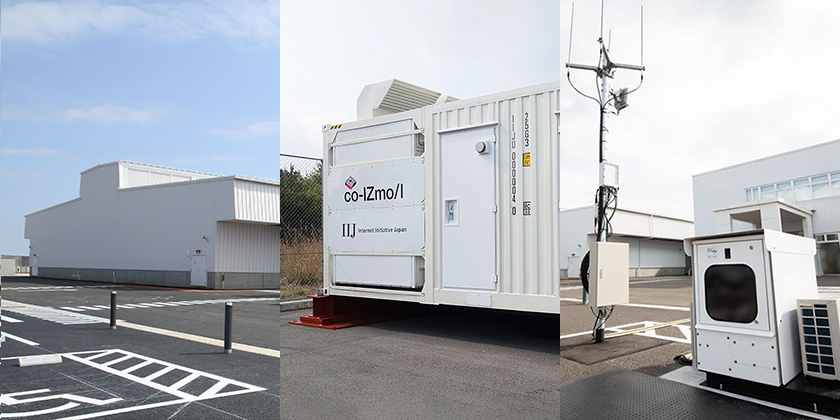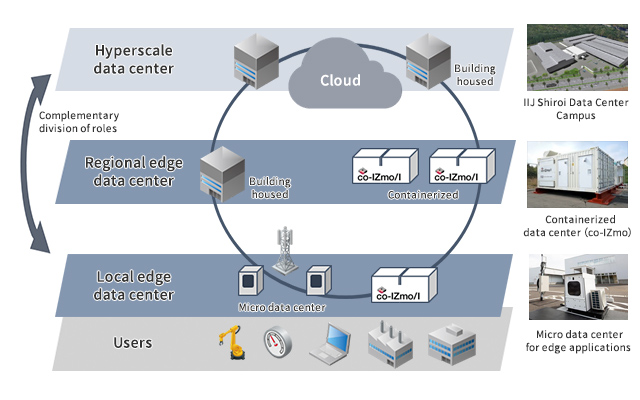
In the era of digital transformation (DX), IT and digital infrastructure is likely to be a hybrid of cloud computing infrastructure hosted in hyperscale data centers in metropolitan suburbs and edge computing infrastructure processing data on-site for the user, or close to it.
Hyperscale data centers
Hyperscale data centers are huge data centers that process massive amounts of data. They are the places where the cloud services used by businesses and consumers exist physically. Many are located in the suburbs of major cities because their premises must be secured and because of the convenience of communication.
Edge data centers
Edge data centers are located close to users who generate massive amounts of data. They are designed to be small data centers for primary data processing and for fast real-time response. Linking multiple edge data centers into a single virtual data center may also be a viable way of increasing the resilience of regional IT and digital infrastructure.
Regional edge data centers
Regional edge data centers are edge data centers that serve a particular region. An expected example application of edge data centers is multi-access edge computing (MEC)* within telecommunications carriers' core networks.
*MEC:Low-latency and high bandwidth technology that enables the real-time processing of data by allocating computing resources at the edge of a communication network.
Local edge data centers
Processing that was previously performed by terminals, such as users' computers, is offloaded to local edge data centers. They perform on-site processing when low latency, security, and availability are required, such as factory production control systems, stadiums, and autonomous driving.

Since the rise of the cloud, it has become commonplace to transfer data via broadband networks so that it
can be centralized and processed in data centers. However, there still remains a need to process data near terminals or users. This is because distributed data processing can increase the speed of processing and responses and reduce network load. To date, IT architecture has repeatedly cycled through phases of centralized processing and decentralized processing. Japan is currently seeing a wave of cloud computing that is centralizing data processing, while in the US and Europe, the trend is toward edge computing to facilitate distributed processing.
Even so, edge computing, with its distributed processing architecture, does not sit in opposition to cloud computing with its centralized processing architecture. An efficient and effective digital transformation is achieved by optimally utilizing distributed processing on edge devices and edge servers and centralized data processing on cloud systems.